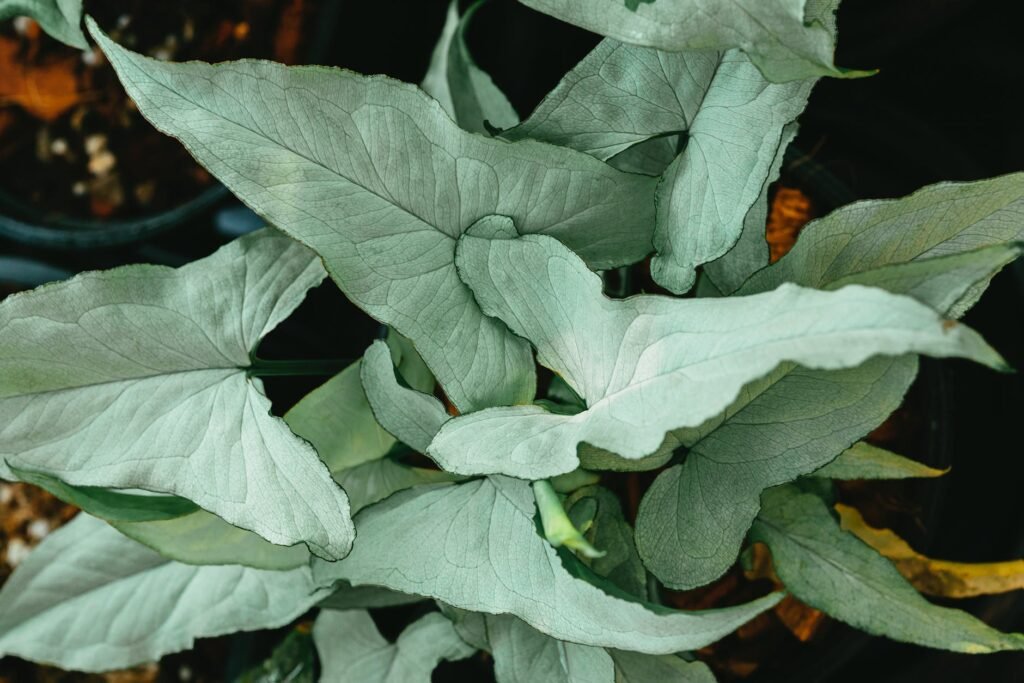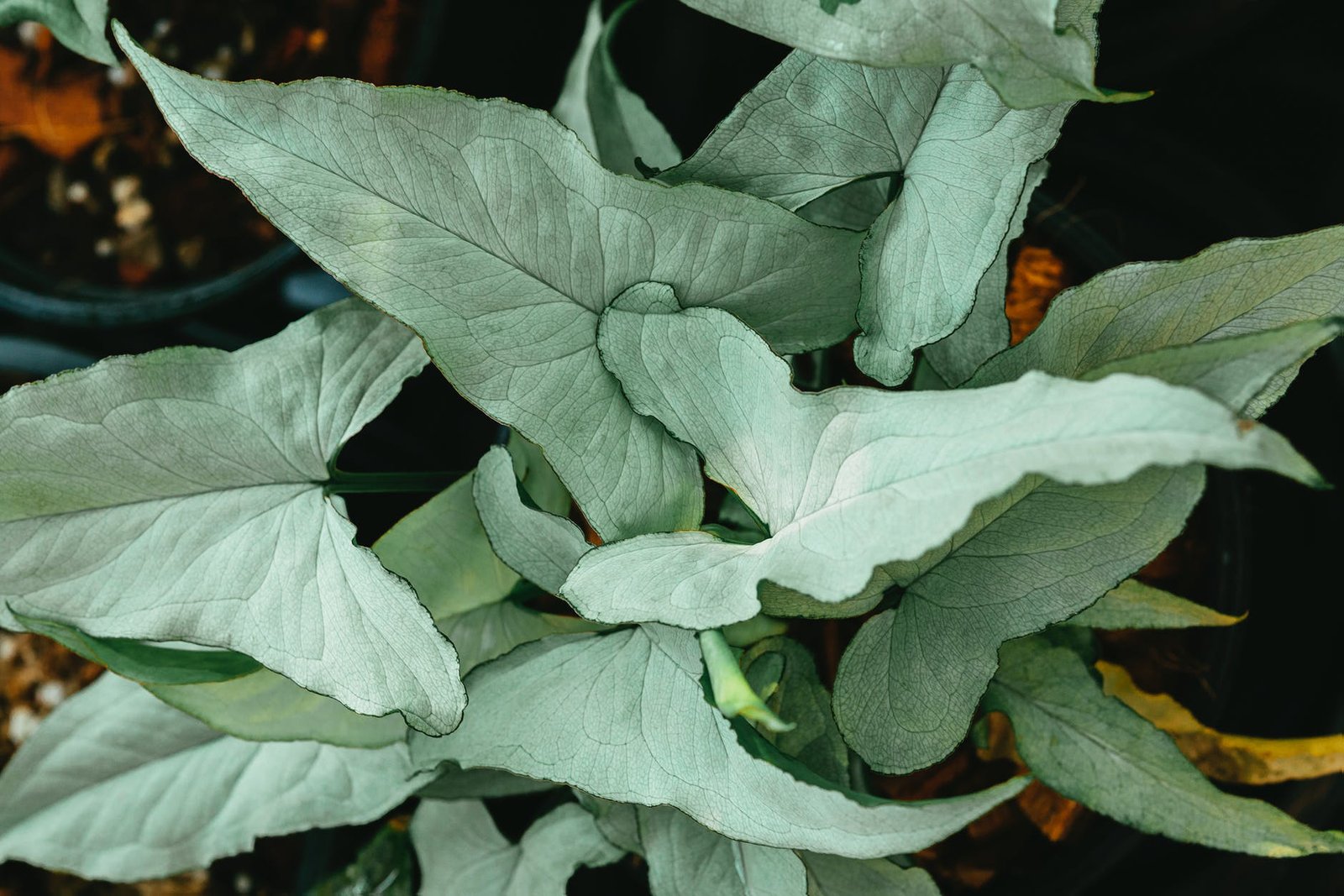Syngonium plant benefits
Syngonium plant benefits: Generally identified, as Goosefoot, nephthytis, or Syngonium podophyllum is a Feng Shui plant. This plant has a particular leaf, which adjusts from an arrow formed to a 5-lobed kind because it matures. The 5 lobed form represents the 5 components; water, fireplace, earth, wood, and steel thus offering the right steadiness of Yin Yang as the brand new leaves are shiny and the older ones are matt.

The 5 lobed form of Syngonium podophyllum/ Goosefoot leaves represents the 5 Feng Shui components; water, fireplace, earth, wood, and steel. Thus it completely balances Yin and yang vitality and encourages constructive chi or vitality. It additionally cleanses the air. The goosefoot, or Syngonium podophyllum, has an inspiring; ‘upward’ wooden vitality, which is related to the east or southeast. Place it on a desk or workstation to let its spirit of spring; daybreak, youth, and new concepts support inspiration.
Syngonium plant benefits
For indoors, place the Syngonium or goosefoot plant at the entrance of a pointy nook or angle that possibly reduces Chi. This may assist scale back stress, anxiousness, sleep issues, and arguments. Chi at all times flows alongside an easy wall or floor till it meets a pointy angle the place it creates turbulent vitality on the level. Putting a Feng Shui plant at the entrance of the angle will soften it.
Syngonium plant benefits can’t be explained in a few words – these plants have a lot of benefits that are more useful nowadays.
Syngonium: Air Purifying Plant
Syngonium vegetation should not simply be ornamental, they have the flexibility to cleanse the air you, breathe and act as anti-pollutants. This vegetation can scale back parts of indoor air air pollution, even unstable natural compounds equivalent to benzene, formaldehyde, toluene, and xylene. In addition, they scale back airborne microbes and improve humidity.
Researchers from NASA and different organizations have accepted this plant as an air air purifier, and it tops the checklist. Syngonium takes in pollution into their leaves, and the toxins go to the foundation zone the place they’re reworked into vitamins for the plant. Houseplants additionally emit water vapors that assist the plant to pull polluted air to the roots the place the plant converts the toxins to plant meals.
Syngonium: Care Directions
Caring is a simple process for this species. Syngonium/ Goosefoot plant/ Arrowhead Vine is a wonderful houseplant for low mild (it doesn’t matter what you name it!). Fashionable for greater than 100 years, the arrowhead plant has withstood the take look at time as a result it is engaging and simple to develop. Younger arrowhead vegetation is bushy and normally fairly full, making them engaging indoor plant decisions for espresso tables, aspect tables, and different surfaces.
Mild: Does finest in brilliant filtered mild. It ought to by no means be subjected to direct daylight, as that will scorch the leaves. If you happen to discover extra progress on one aspect then flip the pot as a result of that aspect is more likely to be receiving extra mild (this may even progress out).
Watering: Preserve the soil moist through the rising interval. Enable the plant to dry out barely between waterings in winter.
Particular Care: Clear the leaves each fortnight to free them from mud accumulation. It could additionally assist lots to mist the plant as usually as doable with water. Pruning throughout summertime will encourage new progress and make the plant bushier in look.
Syngonium: Exhausting to Kill Plant
Sure, the Syngonium podophyllum also called Nephthytis or Arrowhead plant is a hardy houseplant. This tropical, slow-growing plant works properly as both a potted or a dangling plant and usually can survive neglect in its care. It absolutely brings a little bit of greenery to your inside decor without requiring an excessive amount of upkeep.
It could have setbacks every so often, nevertheless it at all times rallies. It might probably seem virtually useless, however, when you get them again heading in the right direction, with the correct lighting and watering, they turn out to be stunning once more! That’s why they’re arduous to kill and good for individuals who can not have a tendency an excessive amount of care to reside vegetation – Syngonium plant benefits
How to Water Syngonium Plant: A Comprehensive Guide for Optimal Growth
Welcome to our comprehensive guide on how to water Syngonium plants for optimal growth and stunning foliage.
Understanding Syngonium: The Enchanting Houseplant
Before we delve into the watering specifics, let’s briefly explore the captivating world of Syngonium. Commonly known as Arrowhead plant or Goosefoot, Syngoniums are popular houseplants cherished for their attractive arrow-shaped leaves. Their vibrant colors and unique patterns make them a delightful addition to any indoor space.
Syngoniums are endemic to tropical areas of Central and South America and are members of the Araceae family. They are a great option for both novice and seasoned gardeners because to their low maintenance requirements.
The Importance of Proper Watering
Proper watering is crucial for the health and longevity of your Syngonium. Overwatering or underwatering can lead to a range of issues, such as root rot, yellowing leaves, and stunted growth. Achieving the right balance is the key to a flourishing plant.
Assessing the Watering Frequency
The frequency of watering your Syngonium largely depends on several factors, including the climate, humidity levels, and the size of the plant. As a general rule of thumb, check the top inch of the soil in the pot. If it feels dry to the touch, it’s time to water. Avoid watering if the soil is still moist to prevent waterlogged conditions.
The Watering Method: Always Opt for Consistency
When it comes to watering your Syngonium, consistency is key. Aim to water your plant at the same time every day or week to establish a watering routine. This helps maintain a stable moisture level in the soil, promoting healthy root development.
Watering Techniques: How to Water Your Syngonium Effectively
1. Soak and Drain
The “soak and drain” method is highly effective for watering Syngoniums. When watering, add water until it starts to flow from the drainage holes at the bottom of the pot. Allow the excess water to drain completely. Never let your Syngonium sit in standing water, as this can lead to root rot.
2. Watering from Below
Another great technique is watering from below. Fill a saucer or shallow container with water and place the plant pot on top of it. The soil will draw up the water it needs through the drainage holes, ensuring the roots receive adequate moisture without overwatering.
3. Mist Your Syngonium
In addition to regular watering, your Syngonium will benefit from occasional misting. This is particularly beneficial in dry indoor environments, as it helps to increase humidity levels. Misting the leaves with water also keeps them clean and free from dust, promoting better photosynthesis.
Signs of Overwatering and Underwatering
To be a successful Syngonium caregiver, it’s essential to recognize the signs of overwatering and underwatering. Here’s what to look out for:
Overwatering:
- Wilting leaves, even when the soil is damp.
- Yellowing or browning of leaves.
- Mold or mildew on the soil surface.
- Unpleasant odor coming from the soil.
Underwatering:
- Drooping or withering leaves.
- Dry, crispy edges on leaves.
- absence of new growth or slow growth.
- soil is separating from the pot’s edges.
Water Quality Matters
The quality of the water you use is often overlooked but can significantly impact your Syngonium’s health. Always use room temperature, filtered water whenever possible. Tap water can contain chemicals and impurities that may harm the plant over time.
Seasonal Watering Adjustments
As the seasons change, so do the watering needs of your Syngonium. During the warmer months, the plant may require more frequent watering due to increased evaporation. In contrast, during the colder months, watering should be reduced as the plant’s growth slows down.
Final Thoughts
Caring for a Syngonium plant can be a fulfilling experience, and understanding the right way to water it is crucial for its prosperity. Remember to be consistent with your watering routine, avoid overwatering, and ensure the water quality is optimal.
By following the guidelines provided in this article, you can create an environment in which your Syngonium will thrive, boasting stunning foliage and bringing life to your living spaces.
Now, go ahead and be the proud caregiver of a healthy and vibrant Syngonium plant!
Syngonium plant vastu direction
Vastu Direction for Syngonium Plant
According to Vastu principles, every direction has a specific energy associated with it. By placing the Syngonium plant in the right direction, you can tap into these energies to enhance the positivity in your living space. Let’s explore the Vastu direction for the Syngonium plant in different rooms:
1. Living Room
The living room is the heart of your home, and placing a Syngonium plant in the north or east direction is highly beneficial. These directions are believed to attract prosperity, good health, and positive energies. Ensure that the plant is positioned near a window to allow ample sunlight to nourish its leaves.
2. Bedroom
For the bedroom, Vastu recommends placing the Syngonium plant in the southeast corner. This direction is associated with the fire element, which can enhance passion and creativity in relationships. The gentle presence of the Syngonium plant can also promote better sleep and relaxation.
3. Kitchen
In the kitchen, it is best to position the Syngonium plant in the northeast corner. This direction is associated with the water element, and placing the plant here is believed to enhance the flow of positive energies and foster a sense of abundance.
4. Home Office
For your home office or study area, consider placing the Syngonium plant in the north or east direction. These directions are associated with knowledge, learning, and career growth. The presence of the plant can help create a conducive environment for productivity and focus.
Syngonium plant uses
Syngonium plant has become a beloved favorite for indoor gardeners and nature enthusiasts alike.
1. Introducing Syngonium – A Plant for All Seasons
Syngonium, also known as the Arrowhead plant or Goosefoot plant, is a beautiful and adaptable houseplant native to tropical and subtropical regions of the Americas. Its unique arrow-shaped leaves and vibrant colors make it a charming addition to any indoor space. But, there’s much more to this plant than meets the eye!
2. Enhancing Indoor Air Quality
One of the most compelling reasons to embrace Syngonium in your living space is its exceptional air-purifying properties. The plant effectively filters out harmful toxins such as formaldehyde, benzene, and trichloroethylene from the air, making it a natural air purifier. By placing a Syngonium in your home or office, you can breathe cleaner and fresher air, promoting better health and well-being.
3. Syngonium as a Stress Reliever
In today’s fast-paced world, stress and anxiety have become all too common. The presence of indoor plants like Syngonium can work wonders in reducing stress levels and creating a soothing ambiance. Studies have shown that spending time amidst greenery can lower cortisol levels and elevate mood, helping you feel calmer and more relaxed.
4. Aesthetics and Interior Decor
Syngonium is an excellent choice for interior decorators and plant enthusiasts alike. Its foliage comes in various eye-catching colors, including green, variegated, and even pink. Whether you prefer a minimalist setup or a lush indoor garden, Syngonium’s versatility allows it to adapt and complement any design style seamlessly.
5. Low-Maintenance Houseplant
For those with a busy lifestyle, Syngonium is a dream come true. This resilient plant thrives in a variety of lighting conditions, from bright indirect light to partial shade, making it suitable for almost any room. Additionally, it doesn’t demand constant attention, requiring only moderate watering and occasional pruning to keep it looking vibrant and healthy.
6. Syngonium in Feng Shui
Feng Shui practitioners vouch for the positive energy and balance that indoor plants bring to a space. Among them, Syngonium holds a special place due to its auspicious arrow-shaped leaves, symbolizing growth and progress. Placing a Syngonium in specific areas of your home can attract prosperity and harmony, enhancing the overall energy flow within the space.
7. Culinary Uses – Beyond Ornamental Value
The Syngonium is not only a visual delight but also has surprising culinary applications. In some cultures, the young leaves of certain Syngonium varieties are used as a nutritious addition to salads and other dishes. However, it’s essential to research thoroughly and ensure the specific variety is safe for consumption before experimenting in the kitchen.
8. Syngonium Propagation – Growing Your Collection
If you’re a plant lover, you’ll be delighted to know that Syngonium is relatively easy to propagate. From stem cuttings to air layering, there are various methods to grow new plants from your existing Syngonium specimens. This means you can share your love for these plants with friends and family or expand your indoor garden without much hassle.
9. Syngonium as a Gift – Sharing Nature’s Beauty
Looking for a thoughtful gift for a loved one? Syngonium can be an ideal choice. Its elegant appearance and symbolism of growth make it a meaningful present for various occasions, including birthdays, housewarming, or even as a gesture of gratitude. Your gift will not only brighten up their space but also convey your caring and eco-conscious nature.
10. Syngonium Varieties and Cultivars
Syngonium enthusiasts will be thrilled to explore the wide range of varieties and cultivars available. From the popular Syngonium podophyllum to the rare Syngonium erythrophyllum, each has its unique characteristics, making collecting these plants an exciting hobby. Whether you’re a beginner or a seasoned plant enthusiast, there’s always a new Syngonium to captivate your heart.
The Arrowhead Plant: A Vastu Powerhouse
The arrowhead plant is a versatile and aesthetically pleasing houseplant that possesses immense Vastu benefits. Its distinctive arrow-shaped leaves symbolize growth and progress, making it a perfect addition to your home or workspace. The plant is known to attract positive energy and can be strategically placed to balance the energies in different areas of your abode.
Choosing the Right Placement
To maximize the Vastu benefits of the arrowhead plant, we recommend considering the following placements:
1. North or East Direction:
Placing the arrowhead plant in the north or east direction of your home is highly auspicious. These directions are associated with prosperity, growth, and positive vibrations. The plant’s vibrant greenery in these areas can stimulate new opportunities and open doors to success.
2. Wealth and Abundance Corner:
In Vastu, the southeast corner is considered the wealth and abundance corner. Positioning the arrowhead plant here can attract financial prosperity and abundance into your life.
3. Negativity Dispeller:
The arrowhead plant is believed to dispel negative energies and promote positivity. Placing it near entrances or windows helps in keeping negative influences at bay.
4. Home Office or Study Area:
For those working or studying from home, keeping an arrowhead plant on your desk or in your study area enhances focus, creativity, and overall productivity.
Caring for Your Arrowhead Plant
Ensuring the well-being of your arrowhead plant is crucial for harnessing its positive energies. Follow these tips to care for your plant and amplify its Vastu benefits:
1. Sunlight:
The arrowhead plant thrives in indirect light. Avoid placing it in direct sunlight, as it can scorch the leaves.
2. Watering:
Keep the soil consistently moist, but avoid overwatering. Allow the top inch of the soil to dry before watering again.
3. Pruning:
Regularly trim yellowing or damaged leaves to promote healthy growth and maintain the plant’s positive energy.
4. Soil and Fertilizer:
Use a well-draining potting mix and feed the plant with a balanced liquid fertilizer during the growing season.
Vastu Tips for Your Entire Home
While incorporating the arrowhead plant is a powerful Vastu remedy, consider implementing these additional tips to harmonize energies throughout your living spaces:
1. Declutter:
A cluttered home hinders the flow of positive energy. Organize and declutter your space regularly.
2. Fresh Air and Natural Light:
Open windows and allow fresh air and natural light to enter your home daily. Fresh air revitalizes energies and enhances overall well-being.
3. Crystals and Gemstones:
Strategically place crystals or gemstones like amethyst, rose quartz, or citrine to amplify positive energies.
4. Elemental Balance:
Balance the five elements in your decor. Use Earth elements with clay pots, Water elements with fountains, Fire elements with candles, Air elements with open space, and Space elements with open areas in the room.
The Power of Vastu for a Harmonious Life
Incorporating Vastu practices into your living spaces can bring about a profound transformation in your life. By harnessing the natural energies of the arrowhead plant and aligning your home with Vastu principles, you can experience enhanced well-being, improved relationships, and increased success in your endeavors.
Remember, the journey towards a harmonious life through Vastu is a continuous one. Embrace these practices with an open heart and a positive mindset, and you will undoubtedly see the positive impact they can bring to your life.
So, go ahead and adorn your living spaces with the arrowhead plant, and watch as the energies around you shift towards positivity and prosperity.
Arrowhead plant benefits
we’ll delve into the fascinating world of Arrowhead Plants, shedding light on their unique characteristics, care requirements, and the numerous advantages they offer for your health and environment.
1. Understanding the Arrowhead Plant
The Arrowhead Plant, scientifically known as Syngonium podophyllum, is a captivating evergreen species that belongs to the Araceae family. Originating from the tropical rainforests of Central and South America, this versatile plant has become a favorite among indoor gardeners due to its stunning appearance and adaptability to different environments.
2. Mesmerizing Foliage
One of the most alluring features of the Arrowhead Plant is its distinct foliage. The leaves are shaped like an arrowhead, displaying unique variegation patterns that vary from species to species. These patterns can range from elegant whites and greens to bold pinks and purples, adding a touch of artistic flair to any living space.
3. Air Purification Powerhouse
Apart from its visual appeal, the Arrowhead Plant is an exceptional air purifier. It efficiently filters out harmful airborne toxins, such as formaldehyde, benzene, and xylene, making your indoor environment cleaner and healthier. This natural air-purifying property is especially beneficial for individuals with respiratory conditions, allergies, or those who simply want to breathe fresh and rejuvenating air at home.
4. Stress Reduction and Mental Health
Bringing nature indoors has been linked to reducing stress and anxiety, and the Arrowhead Plant is no exception. Studies have shown that being surrounded by greenery can have a calming effect on the mind, promoting a sense of tranquility and well-being. Incorporating this green gem into your home can create a serene atmosphere and act as a natural stress-reliever in today’s fast-paced world.
5. Enhanced Productivity and Creativity
Apart from its soothing properties, the Arrowhead Plant has also been associated with increased productivity and creativity. Having a plant in your workspace can boost focus, concentration, and problem-solving skills. So, if you’re looking to elevate your work-from-home experience or seeking inspiration for your creative endeavors, consider placing an Arrowhead Plant near your workspace.
6. Easy to Care For
Whether you’re a seasoned plant enthusiast or a novice gardener, the Arrowhead Plant is an excellent choice due to its low-maintenance nature. It thrives in well-draining soil and requires moderate watering. Furthermore, it adapts well to different light conditions, making it suitable for various indoor spaces, even those with limited natural light.
7. Versatile Display Options
With its diverse foliage and growth patterns, the Arrowhead Plant offers versatile display options. It can be grown as a lush and compact table centerpiece, a cascading plant in hanging baskets, or even trained to climb a trellis, adding a touch of elegance to any vertical space.
8. Propagation and Sharing the Green Love
The joy of nurturing a plant and watching it grow is truly rewarding. The Arrowhead Plant allows for easy propagation, meaning you can grow new plants from cuttings. This not only gives you the opportunity to expand your green collection but also share the love of gardening with friends and family.
9. Tips for Healthy Growth
To ensure your Arrowhead Plant thrives and graces your home with its beauty for years to come, here are some essential tips to keep in mind:
9.1. Proper Watering
While the Arrowhead Plant appreciates regular watering, overwatering can lead to root rot. Allow the top inch of soil to dry out before watering again, and ensure proper drainage to prevent waterlogged roots.
9.2. Ideal Light Conditions
Although adaptable, Arrowhead Plants prefer bright, indirect light.
9.3. Humidity Levels
Being native to tropical regions, these plants thrive in humid environments. Regular misting or using a humidifier can mimic their natural habitat and keep them happy and healthy.
9.4. Pruning and Training
Pruning is essential to maintain the plant’s shape and promote bushier growth. You can also train the Arrowhead Plant to climb by providing a support structure.







- The Five Tallest Trees in the World
- The Oldest Tree in the World: A Fascinating Journey Through Time
- The Risks of Sleeping Under a Tree at Night: Exploring the Truth behind the Age-Old Advice
- The Types of Trees That Produce the Most Oxygen
- The Potential Impacts of a World Without Trees
- The Best Houseplants for a Healthy and Beautiful Home
